"Cherishing Little Steps - A Haven for Baby and Family Journeys"
Quick Guide to Car Seats
Are you ready to buckle up for a journey into the world of car seats? Let’s hit the road together and discover the ins and outs of these essential safety companions.
In this quick guide, we’ll explore the different types of car seats, from infant seats to boosters and all-in-ones. We’ll also delve into the importance of harness systems and the safety features you should look for.
But it doesn’t stop there! We’ll give you tips on proper installation and help you choose the perfect car seat for your little one.
So, grab your coffee and get cozy because we’re about to embark on a car seat adventure like no other.
Let’s get started!
Key Takeaways
- There are different types of car seats available, including infant car seats, convertible car seats, booster seats, and all-in-one car seats.
- All-in-one car seats are a versatile option that can be installed using seat belts or the LATCH system and can grow with your child.
- Using an all-in-one car seat eliminates the need for multiple car seats, saving time and money.
- When choosing a car seat, consider factors such as size, weight limits, age appropriateness, ease of installation, safety features, and compatibility with your vehicle’s seat belts or LATCH system.
Types of Car Seats

Now let’s delve into the different types of car seats you should consider for your child’s safety. When it comes to car seat regulations, it’s essential to choose the right type based on your child’s age, weight, and height. The three main types are infant car seats, convertible car seats, and booster seats.
Infant car seats, also known as rear-facing seats, are designed for newborns and young infants. They provide maximum protection and support for your baby’s head, neck, and spine. It’s important to follow car seat regulations and keep your child in a rear-facing seat until they outgrow the height and weight limits.
Convertible car seats can be used in both rear-facing and forward-facing positions. They accommodate a wider range of ages and sizes, making them a cost-effective option. Remember to follow car seat regulations and keep your child in a rear-facing position for as long as possible before transitioning to forward-facing.
Booster seats are for older children who’ve outgrown their convertible seats but aren’t yet ready for a regular seat belt. They provide a boost to ensure proper seat belt fit and protect your child in case of an accident. Keep in mind that car seat expiration is important to consider, as seats can degrade over time and may not provide adequate protection.
Infant Car Seats

To ensure maximum protection and support for your newborn or young infant, choose an infant car seat, also known as a rear-facing seat. Installing car seats correctly is crucial for your baby’s safety during car rides. When choosing the right size, consider your baby’s weight and height.
Infant car seats are designed for babies up to 35 pounds and 32 inches tall. They provide a snug and secure fit, cradling your baby’s delicate body. These seats come with a base that can be securely attached to your car’s seat using either the seat belt or the LATCH system. The LATCH system uses lower anchors and tethers that are built into your car, making installation easier. Remember to always follow the manufacturer’s instructions for proper installation.
Infant car seats also have a convenient handle that allows you to carry your baby in and out of the car with ease. Keep in mind that rear-facing seats provide the best protection for your baby’s head, neck, and spine in the event of a crash. It’s recommended to keep your baby in a rear-facing car seat until they reach the maximum weight and height limit specified by the manufacturer, usually around 2 years of age.
Convertible Car Seats
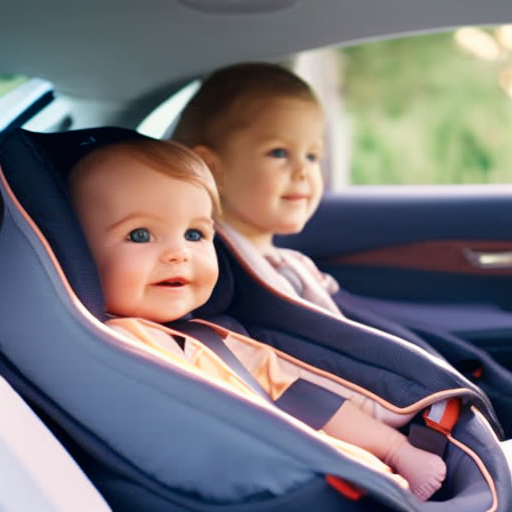
You should regularly consider transitioning to a convertible car seat as your child grows. Convertible car seats are designed to accommodate children as they transition from infancy to toddlerhood. They offer more flexibility and longevity compared to infant car seats, making them a practical and cost-effective choice for many parents.
Convertible car seats are known for their safety features, providing excellent protection for your child on the road. They’re equipped with a five-point harness system that secures your child in place and minimizes the risk of injury during a collision. Additionally, convertible car seats are designed to meet rigorous safety standards set by regulatory bodies, ensuring your child’s well-being.
When looking for the best convertible car seat, consider factors such as ease of installation, comfort, and adjustability. Look for models that have high safety ratings and positive customer reviews. Popular brands like Graco, Britax, and Chicco offer a wide range of convertible car seats that prioritize safety and comfort.
Remember to follow the manufacturer’s guidelines and recommendations for proper installation and use. Regularly check the convertible car seat for any signs of wear and tear, and replace it if necessary. By choosing a convertible car seat that prioritizes safety and meets your child’s needs, you can ensure a secure and comfortable journey for your little one.
Booster Car Seats

Consider transitioning to a booster car seat once your child outgrows their convertible car seat. Booster seats are designed to provide proper protection for children who’ve outgrown their forward-facing car seats but aren’t yet ready for a seat belt alone. Booster seat safety is crucial to ensure your child’s safety during car rides.
When choosing the right booster seat, opt for one that fits your child’s height, weight, and age. Look for a booster seat that’s easy to install and offers a secure fit in your vehicle. It should have a sturdy and adjustable harness system that keeps your child snugly in place. Additionally, ensure that the booster seat has been tested and meets all safety standards.
Remember that booster seats aren’t all the same. There are high-back boosters and backless boosters, each offering different features and advantages. High-back boosters provide head and neck support, making them ideal for vehicles without headrests. Backless boosters are more portable and suitable for older children.
Always follow the manufacturer’s instructions for installation and usage of the booster seat. Regularly check for any recalls or safety updates to stay informed. By choosing the right booster seat and adhering to booster seat safety guidelines, you can provide your child with the necessary protection during car rides.
All-in-One Car Seats
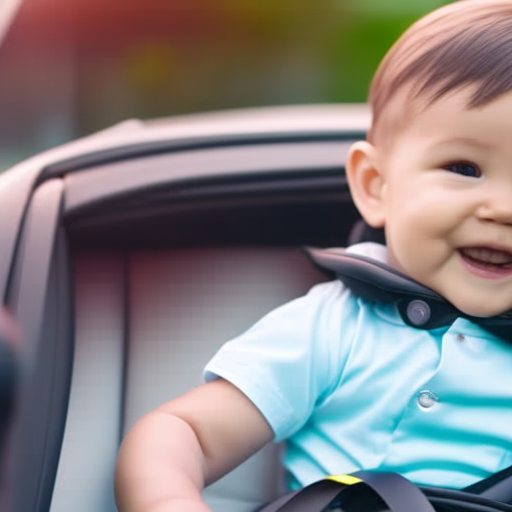
When transitioning from a convertible car seat, an all-in-one car seat provides a versatile and long-lasting option for your child’s safety. These car seats are designed to accommodate your child from infancy to toddlerhood and even beyond. The installation process for all-in-one car seats is relatively straightforward, and most models come with detailed instructions to guide you through the process. Generally, they can be installed using either the vehicle’s seat belt or the LATCH system.
One of the key benefits of all-in-one car seats is their ability to grow with your child. With adjustable settings and harness heights, you can easily adapt the seat as your child grows taller and gains weight. This eliminates the need for multiple car seats, saving you time and money. Additionally, all-in-one car seats often come with extra features such as side-impact protection and reclining options for added comfort.
Remember to always follow the manufacturer’s instructions and guidelines for proper installation and use. With an all-in-one car seat, you can have peace of mind knowing that your child is secure and protected during every car ride.
Rear-Facing Car Seats

To ensure maximum safety for your child, rear-facing car seats should always be used during car rides. Rear-facing car seats provide numerous benefits and greatly reduce the risk of injury in the event of a crash. Here are some installation tips and benefits of using rear-facing car seats:
-
Proper installation: Make sure to carefully follow the manufacturer’s instructions when installing the car seat. Double-check that it’s securely fastened and doesn’t move more than an inch in any direction.
-
Enhanced protection: Rear-facing car seats provide optimal support for your child’s head, neck, and spine. In the event of a crash, the seat absorbs most of the impact, reducing the risk of serious injuries.
-
Age-appropriate: Rear-facing car seats are suitable for infants and toddlers up to a certain weight or height limit. It’s crucial to transition to a forward-facing seat only when your child meets the recommended criteria.
-
Injury prevention: Studies have shown that rear-facing car seats significantly reduce the risk of severe injuries in children. The rear-facing position disperses the force of a crash more evenly, protecting vulnerable body parts.
-
Peace of mind: Knowing that your child is as safe as possible during car rides brings a sense of reassurance and peace of mind. Rear-facing car seats are designed with your child’s safety as the top priority.
Installing a rear-facing car seat correctly and utilizing its benefits can greatly increase your child’s safety while on the road. So, be sure to follow the installation tips and take advantage of the extra protection offered by rear-facing car seats.
Forward-Facing Car Seats
You should continue using a forward-facing car seat as your child grows and meets the recommended age, weight, and height requirements. Forward-facing car seats are designed to provide optimal safety and protection for your child once they’ve outgrown their rear-facing seat.
When it comes to forward facing car seat installation, it’s crucial to follow the manufacturer’s instructions carefully. Ensure that the seat is securely installed using either the vehicle’s seat belt or the lower anchors and tethers for children (LATCH) system. Make sure the seat is tightly secured and doesn’t move more than an inch in any direction.
Proper forward-facing car seat usage is essential for your child’s safety. Make sure the harness straps are snug and positioned at or above your child’s shoulders. The chest clip should be at armpit level to keep the straps in place. It’s important to avoid bulky clothing or blankets that can interfere with the harness’s proper fit.
Regularly check the seat’s weight and height limits and transition your child to a booster seat once they’ve outgrown the forward-facing seat.
Combination Car Seats
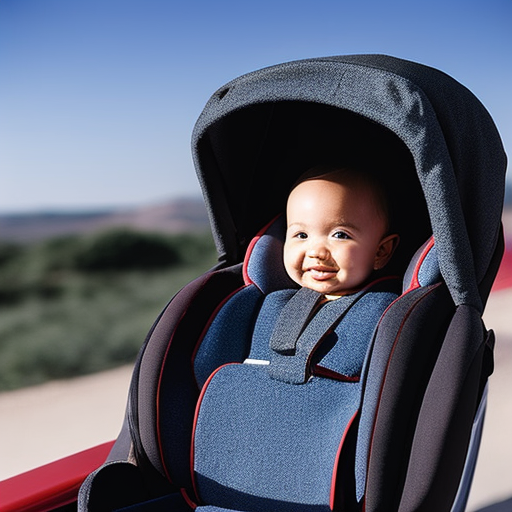
Are you wondering how combination car seats can provide the next level of safety and convenience for your growing child? Combination car seats are a versatile and practical option for parents who want a seat that can adapt to their child’s changing needs.
Here are some benefits of combination car seats:
- Longevity: Combination car seats can be used from infancy all the way to toddlerhood, eliminating the need for multiple seats as your child grows.
- Ease of use: These seats are designed to be user-friendly, with adjustable harnesses and easy installation systems.
- Cost-effective: Investing in a combination car seat can save you money in the long run, as you won’t need to purchase separate seats for each stage of your child’s development.
- Safety features: Combination car seats often come with advanced safety features such as side-impact protection and energy-absorbing foam, providing added peace of mind.
- Comfort: Many combination car seats offer plush padding and adjustable headrests, ensuring your child stays comfortable during long car rides.
When it comes to choosing the best combination car seat brand, top options include Graco, Britax, Evenflo, Chicco, and Safety 1st. These brands are known for their commitment to safety, durability, and comfort. Selecting a combination car seat from one of these trusted brands will help ensure your child’s safety and comfort on the road.
Harness Systems
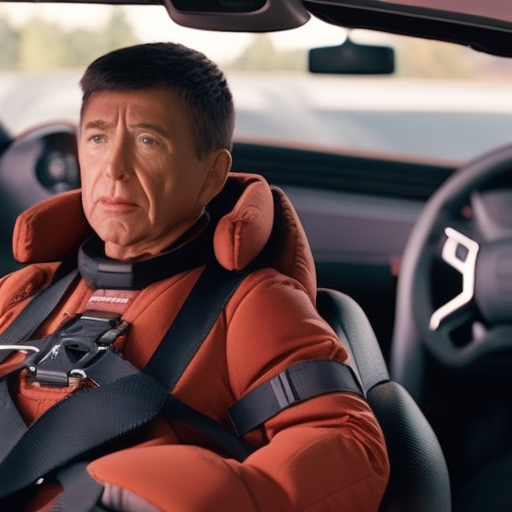
As your child grows, it’s important to understand how harness systems in combination car seats ensure their safety and provide a secure fit. The harness system is a crucial component of a car seat, designed to keep your child strapped in securely during travel. It consists of adjustable straps that hold your child in place, providing protection in the event of a sudden stop or crash.
To ensure a proper fit, it’s essential to adjust the straps correctly. The table below outlines the steps to follow when adjusting the harness system:
| Step | Instructions |
|---|---|
| 1 | Place your child in the seat and fasten the harness. |
| 2 | Tighten the straps until they are snug against your child’s body. |
| 3 | Check for proper fit by ensuring that you can fit no more than two fingers between the straps and your child’s shoulders. |
Safety Features to Look For
When selecting a car seat, it’s important to regularly check for safety features that are designed to enhance your child’s protection during travel. Here are some key safety features to look for:
-
Five-point harness system: This type of harness distributes crash forces across the strongest parts of the body, reducing the risk of injury.
-
Side-impact protection: Look for car seats that offer extra padding and energy-absorbing materials on the sides to shield your child from potential side impacts.
-
Latch system: The lower anchors and tethers for children (LATCH) system makes it easier to securely install the car seat in your vehicle, providing additional stability.
-
Adjustable headrest: A car seat with an adjustable headrest ensures your child’s head is properly supported and protected in the event of a collision.
-
Easy installation: Look for car seats that come with clear instructions and user-friendly features to make installation hassle-free and minimize the risk of incorrect installation.
Remember to always follow the latest car seat regulations and guidelines provided by your country’s transportation authorities. Additionally, make sure to carefully read the car seat’s installation manual and seek professional assistance if needed.
Proper Car Seat Installation
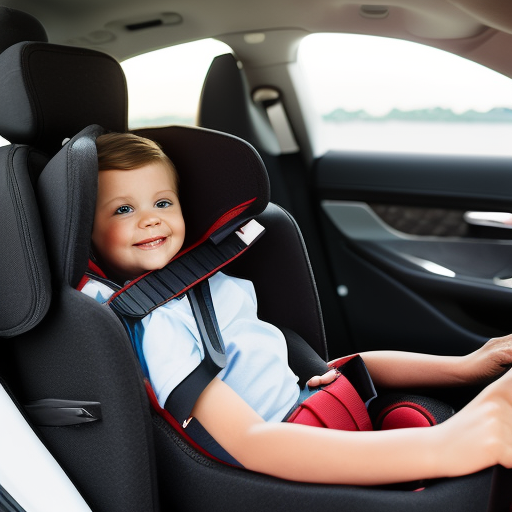
To ensure your child’s safety, it is crucial that you properly install the car seat, building upon the safety features discussed earlier. Here are some car seat installation tips and safety guidelines to follow:
| Car Seat Installation Tips | Car Seat Safety Guidelines |
|---|---|
| 1. Read the Manual | 1. Choose the Right Seat |
| Familiarize yourself with the car seat’s manual. Each seat may have different installation instructions. | Select a car seat that is appropriate for your child’s age, weight, and height. Follow the manufacturer’s guidelines. |
| 2. Use the Correct Belt Path | 2. Position the Seat Correctly |
| Ensure that the seat belt or LATCH system is threaded through the correct belt path on the car seat. | Install the car seat in the back seat of the vehicle. Rear-facing seats should be positioned at a 45-degree angle. |
| 3. Check for a Secure Fit | 3. Tighten the Straps |
| Once installed, check for a secure fit by pushing and pulling the car seat. It should not move more than an inch in any direction. | Securely fasten the straps and tighten them snugly against your child. The harness should be at or below your child’s shoulders. |
Tips for Choosing the Right Car Seat
You should consider certain factors when choosing a car seat for your child. Here are some tips for installation and the importance of car seat safety:
-
Size and weight limits: Ensure that the car seat is appropriate for your child’s age, height, and weight. This will ensure a secure fit and optimal protection.
-
Ease of use: Look for a car seat that’s easy to install and adjust. A complicated installation process can increase the risk of improper installation.
-
Safety features: Check for essential safety features like a five-point harness, side-impact protection, and energy-absorbing foam. These features enhance the overall safety and protection of your child.
-
Compatibility: Make sure the car seat is compatible with your vehicle’s seat belts or LATCH system. This will ensure a secure and proper installation.
-
Reviews and ratings: Read reviews and check safety ratings from reputable sources, such as the National Highway Traffic Safety Administration (NHTSA). This can help you make an informed decision and choose a reliable and safe car seat.
Choosing the right car seat for your child is crucial for their safety on the road. By considering these tips, you can ensure that your child is protected and secure during every car journey.
Frequently Asked Questions
How Often Should Car Seats Be Replaced?
Car seats should be replaced according to their expiration dates, which can usually be found on a sticker or label. This is important because proper car seat installation ensures your child’s safety while traveling.
Can Car Seats Be Used in Pickup Trucks?
Yes, car seats can be used in pickup trucks. However, it’s important to ensure compatibility and proper installation. Consult your vehicle and car seat manuals for specific instructions to keep your child safe.
Are Car Seats Required on Airplanes?
Yes, car seats are required on airplanes for children under a certain age or weight. This is because turbulence can happen unexpectedly. Additionally, car seats are not allowed on trains, but they may still be necessary for older children.
Can Car Seats Be Used in Taxis or Ride-Sharing Vehicles?
Yes, you can use car seats in taxis or ride-sharing vehicles for car seat safety. Make sure to properly install the seat and secure your child. It’s important to prioritize their safety while traveling.
What Should I Do if My Child Outgrows the Weight or Height Limit for Their Car Seat?
If your child outgrows the weight or height limit for their car seat, it’s crucial to find a suitable replacement. Consider transitioning to a new car seat that meets their current size requirements, ensuring their safety on the road.
Conclusion
In conclusion, choosing the right car seat for your child is crucial for their safety while on the road. Whether you opt for an infant car seat, convertible seat, booster seat, or all-in-one seat, ensure that it’s installed correctly and has the necessary safety features.
Remember, safety should always be your top priority, so take the time to research and consider your options. Don’t let the importance of choosing the right car seat drive you up the wall; make an informed decision to keep your little one safe.


